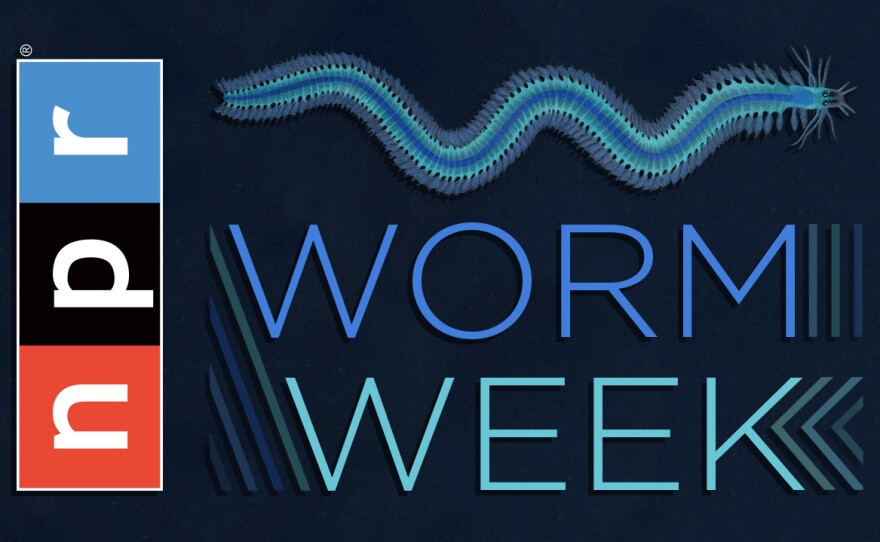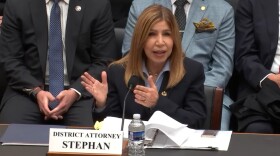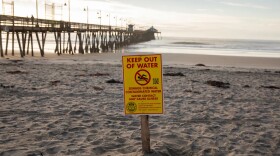

How do you get rid of river blindness? It's all about the worm.
Specifically, about "breaking the life cycle" of onchocerca volvulu, the parasitic worm that causes the disease, says Dr. Frank O. Richards Jr., who directs the Carter Center's river blindness elimination and other tropical disease programs.
But that cycle of transmission and infection is so complex that until recently, many experts believed elimination as a goal was unattainable. Now the World Health Organization target date to achieve it is 2025, thanks to the widespread distribution of a game-changing medicine and what Richards calls the "vision" of accomplishing the possibility, encouraged by the successful strategies employed in the Carter Center's fight against Guinea worm.
As of August, onchocerciasis (the formal name for the disease) has been eliminated from the countries of Colombia, Ecuador and Mexico and from 13 districts in Uganda. Richards is also optimistic that Guatemala will soon be certified by the World Health Organization as free of the disease, leaving only the hard-to-reach border area between Venezuela and Brazil as the last endemic area in the Americas.
Even so, about 120 million people worldwide remain at risk for the disease, 99 percent of them in Africa, where 31 countries are affected. "The biggest challenge is the sheer scale of what we're looking at in Africa," says Darin Evans, senior medical and technical adviser of Neglected Tropical Diseases (NTDs), at USAID.
Any strategy to break the transmission cycle must begin by focusing on the round, threadlike worm that grows in coils just beneath the skin and forms lumpy nodules throughout the body. Uncoil the worms and they're as long as 14 to 24 inches. And they can live within the human body for about 15 years. (Compare that to the life span of a Guinea worm, which lives about one year. The difference in longevity contributes to difficulties in treating and eliminating the river blindness worm.)
This parasite can cause such unbearable itching that "people will use rocks to scrape their skin and their eyes," says Richards, resulting in rashes and inflamed skin lesions. When the worms spread to the eyes, there can be visual loss and permanent blindness — called river blindness because the Simulium black flies whose bites transmit the worms to humans thrive near rapidly flowing rivers or streams.
The transmission cycle revolves around the black fly. When they bite, the black flies deposit larvae (baby worms) just beneath the skin, where they can reproduce about 1,000 more tiny larvae (microfilariae) each day. The black flies also feed on the larvae that have been growing within those lumps. Within the black fly's gut, these microfilariae keep on developing for about one to three weeks before migrating to the fly's mouthpart, by which time the worm is at the ready to infect the next person with the next bite.
And on the infection goes, with onchocerciasis worms going back and forth between humans and black flies and back again in a cycle that can repeat ad infinitum. That is, unless it's interrupted.
One way to stop it is to try to control the black fly population by employing helicopters to spray the rivers with compounds similar to those used to kill the Guinea worm. For about 14 years, during the 1970s and 1980s, the World Health Organization successfully used that strategy to control the disease in parts of West Africa, reducing and keeping it to minimal levels. But a program that would reach the entire continent seemed prohibitively expensive.
Enter a second method — and a paradigm shift from the goal of controlling the disease to eliminating it. That is due to the widespread use, starting in 1987, of the drug ivermectin, which kills the microfiilariae when taken, usually in oral tablets by people in an affected area. Once the goal became elimination, doses were increased from once to between two and four times a year to ensure broader and longer coverage.
A key factor making that possible has been the pledge by Merck, which manufactures the medicine under the brand name Mectizan, to donate the drug as long as necessary to all people affected by the disease. That donation in itself, says Richards, represents about 60 percent of the cost of putting the program in place. When the elimination program began in Latin America in 1992, about 600,000 people were at risk, compared to 24,000 today, Richards reports.
But a question remained: Would the elimination strategies that worked in Latin American be feasible in Africa? "When you think about Nigeria, where you could have 30 million people that need treatment, to treat them twice a year, that is a big jump in production," bringing with it additional logistical and delivery issues, Evans of USAID points out.
"Most experts did not believe it could happen. For many years that was the belief," says Dr. Tom Lakwo, national coordinator, Onchocerciasis Elimination Program Ministry of Health, Uganda. But in 2007, he continues, Uganda said "enough is enough, we're going to break the cycle." When the program began, in some areas the disease was so widespread that riverbank communities had been abandoned, he says. Now, "people are suffering less," and people and agriculture have returned to areas where the disease was eliminated. The production of tea, rice, bananas and coffee has increased and school attendance, which had been low as a result of the infections and the number of children affected, has also grown. Approximately 2 million people fewer are at risk as a result of the program, which relies on community members trained to distribute and record the treatments.
Because of the work with the communities, the Carter Center has also been able to piggyback treatments for other diseases as well, such as lymphatic filarisis, for which the same drug is effective, says Moses Katabarwa, senior program epidemiologist for the Carter Center's River Blindness Elimination and other tropical disease programs.
Challenges remain. "To preserve the gains we've made," says Lakwo, "the top agenda is cooperation with other countries, in order to not have resurgence" of the disease as people move back and forth among borders. Political instability and weak public health structures could also be problematic, according to Richards of the Carter Center.
One more obstacle to overcome: co-infection with another worm parasite, loa loa, which is found in parts of central and west Africa. The reason: For those who suffer from diseases carried by both parasitic worms, ivermectin treatment can cause serious and potentially fatal complications.
As a result, new tools are required to test people, says Evans of USAID. There is already a smartphone camera-microscope and app that can test for the presence of loa loa. "It's a good way to discover individuals who are at risk," Evans says, but since millions of people are affected, new tools — including the potential development of new drugs — will be needed to eliminate river blindness.
In addition, he says, "countries need to do what Uganda and a few others are doing: Setting up their own programs and creating strategies for going forward with the elimination strategy." USAID is helping develop and coordinate those efforts, he says.
Meanwhile, the success of the past decade has been "astonishing," he says. And getting to the goal line of 2025 now seems much more of a possibility than before.
Copyright 2016 NPR. To see more, visit http://www.npr.org/.






